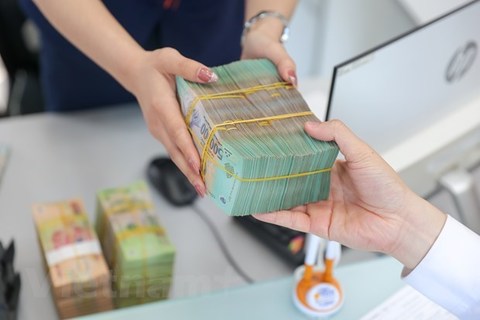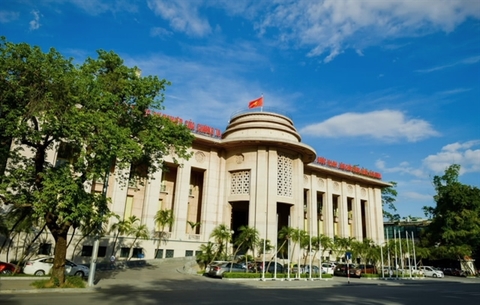Credit growth slowing down, raising fear of business contraction
Credit growth slowing down, raising fear of business contraction
Credit growth in the first months of this year slowed significantly due to high interest rates and firms’ poor health, raising concerns about rising bad debts.

Credit growth by the end of February 2023 increased by nearly 0.8 per cent, equal to only one-third of the rate in the same period last year.
However, the low credit growth is not because of banks’ shortage of capital and credit growth quota like at the end of last year.
The banking system's liquidity is currently in excess with more than VND50 trillion (US$2.1 billion), higher than the SBV’s mandatory requirements. The credit growth quota of banks is also very abundant in the wake of the State Bank of Vietnam (SBV)’s credit growth quota granting early this month.
Governor Nguyen Thi Hong attributed the slow credit growth to some reasons.
First, she said, the first two months of the year coincided with the Lunar New Year, so capital demand was low during the long holiday.
Secondly, many firms are still affected by the COVID-19 pandemic, thus they are unable to meet the banks’ lending conditions.
Orders at many firms declined, making the demand for loans to fall from last year.
Finally, the difficulty of the real estate market has also caused the loan demand to decline, the Governor said.
In a report sent to the Government, the Ministry of Planning and Investment said the low credit growth showed difficulties in absorbing the capital of firms and the economy.
According to many firms, their orders decreased, so they almost had no demand for loans. Even instead of borrowing more capital, many firms have tried to pay off existing loans to reduce financial pressure.
Most export firms are facing a decrease in orders. High inflation and declining purchasing power in major markets such as the US and the EU directly hurt firms.
A representative of the Vietnam Textile and Apparel Association said the decrease in global purchasing power would likely cause the number of orders of the whole textile and garment industry to decrease by 25-30 per cent in the first quarter of 2023.
The situation is not brighter for firms in the wood and furniture industry. Do Thi Kim Loan, general director of Sao Nam Trading and Production Company Limited, said orders from her company decreased by 30-35 per cent compared to last year.
Banking expert Can Van Luc told the Viet Nam News that besides decreasing consumer demand, firms are also facing difficulties in accessing capital and high interest rates.
As firms’ health is exhausted, Luc is very concerned about the risk of rising bad debt.
“Currently, the bad debt ratio of the whole banking system is still under control with an on-balance sheet bad debt ratio of 2 per cent," Luc noted. "However, bad debts can worsen under the context of adverse impacts of the unfavourable conditions post-pandemic while the economy is at risk of a slight recession and the foreign exchange rate is under rising pressure.”
Nguyen Hoai Nam, deputy general secretary of the Vietnam Association of Seafood Exporters and Producers (VASEP), said high interest rates are the biggest concern of firms. Therefore, he suggested the SBV offer a more preferential interest rate policy for seafood exporters, who are under great pressure due to high input costs.
Pham The Anh, head of the National Economics University’s Economics Faculty, said many factors would support interest rate reduction in 2023.
Viet Nam should accept the devaluation of the Vietnamese dong in the short term to reduce interest rates as high interest rates are more harmful to the economy than the devaluation of the dong, Anh suggested.
The good news for firms is that commercial banks have agreed to further reduce the interest rates by 0.2-0.5 percentage points for 6-12 month deposits since early this week to pave the way for a reduction in lending interest rates.
Currently, the highest deposit interest rate is 9 per cent per year against more than 10 per cent last year.


















